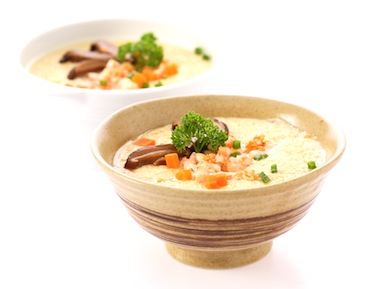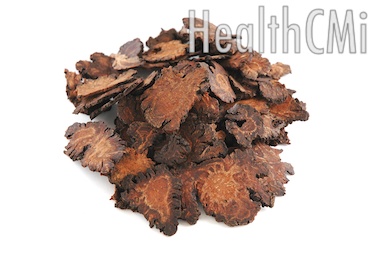Chinese Medicine Dietetics Remedies Sample
Acupuncture CEUs Online

Download the course, complete the online quiz and receive immediate acupuncture license credit. Learn dietetic recipes for specific ailments including headaches, excess body fat and obesity, respiratory disorders, digestive issues, urinary disorders, diabetes, skin conditions and cardiovascular disorders. Enjoy healing recipes, dietetics theory and detailed information on a variety of leafy greens, vegetables, fruits, nuts, seafood and meats.
This is part two in our dietetics series featuring many important recipes and new individual foods. See Chinese Medicine Dietetics #1 for the first part in this series. There is no need to take part #1 prior to taking this course.
About the Authors
Prof. Jeffrey Pang, L.Ac. received his M.D. in western medicine and TCM from the Sun Yat Sen University of Medical Science in Guangzhou, China. He practiced for ten years in Guangzhou and Hong Kong prior to becoming a licensed acupuncturist in California. Prof. Pang’s family has practiced TCM for generations and his clinical practice spans over 30 years. Since 1984, Prof. Pang has served as the Department Chair for both the Theory and Herbology departments at Five Branches University. Currently, he is an active faculty member at Five Branches University.
Adam White, L.Ac., Dipl.Ac. has served as a faculty member and as the Continuing Education Director for Five Branches University. His publications cover a variety of topics including Chinese medicine dietetics, the treatment of pelvic inflammatory disorder and herb-drug interactions. He is currently the CEO of the Healthcare Medicine Institute.
Sample from the Headache Section:
Wind-Cold Headaches
Wind-cold is characterized by headaches, aversion to cold, generalized pain, tightness of the muscles and joints, mild fever, stiff neck, sinus congestion, coughing with clear or white phlegm, sneezing and a floating and tight pulse. Wind-cold exacerbates asthma. Contraction caused by the cold closes the pores and therefore there is an absence of sweating. Consuming hot broth helps to warm the body and helps to release the wind and cold from the surface through diaphoresis.
Cook bighead carp with Bai Zhi, Chuan Xiong and Sheng Jiang (fresh ginger) and Cong Bai (green onion, scallion).
Cooking Instructions (Total cooking time: 1 hour)
- Sauté carp's head with a little oil, salt, garlic and ginger (optional).
- Next, place the carp into a boiling soup of containing:
Bai zhi, approximately 9 grams
Chuan Xiong, approximately 9 grams
Ginger, 2 slices (optional)
- Add green onions in the last 5 minutes of cooking time.
As a channel leading ingredient, the head of the fish leads the healing properties of the herbs to the head. According the Chinese medicine principle of similarities, this is the ‘head to head’ function. If bighead carp is unavailable, use catfish or another other quality fish and include the head.

Chuan Xiong
Bighead carp is an Asian variety of carp that is considered an invasive species in the USA. It has a large, scaleless head. Bighead carp can weight up to approximately 145 pounds and can be up to 60 inches in length. A 40 lb. bighead carp from the Mississippi River is considered very large but record weights for this region are over 90 pounds.
Sample from the Huangdi Neijing Section:
According to the Huangdi Neijing (The Yellow Emperor’s Inner Classic), five element theory specifies that several flavors are contraindicated for specific differential diagnoses per the control cycle. If the liver is deficient, avoid spicy foods. If the lungs are weak, avoid bitter foods. If the spleen and stomach are weak, avoid sour foods. If the heart is sick, avoid salty foods. If the kidneys are deficient, avoid sweet foods. Following these guidelines prevents each of the five elements from overacting upon another and their associated internal organs.
Sample from the Weight Loss Section:
Weight Loss Beverage #2: RCM-104 Ingredients
Lu Cha Ye (camellia sinensis, green tea) 40%
Jue Ming Zi (cassia seeds) 40%
Huai Hua (sophora japonica) 20%
RCM-104 is an herbal formula that may be concentrated into herbal medicine capsules or prepared as a gentle tea. The advantage of concentrated capsules is potency and the advantage of the tea form is the ability to use the formula for long periods of time as part of a healthy dietary regime. To make the beverage, place the ingredients in a cup and add boiling water. Grinding Jue Ming Zi and Huai Hua into a powder enhances the potency of the tea.
In one blinded randomized placebo controlled study of herbal formula RCM-104, participants consumed four capsules, three times per day for 12 weeks. Each capsule contained 500 mg of concentrated herbal granules. The placebo control group had an herbal starch in their capsules. All herbal ingredients were supplied by Sen Ten Pharmaceuticals Co. Ltd. in Taiwan. Researchers note, “The RCM-104 formula demonstrated effectiveness in the reduction of BW (excessive body weight), BMI and BFC (body fat composition) as well as improved quality of life compared to the placebo group.”
Sample from the Food Monograph Section:
Spinach
Spinach is sweet, cooling, astringent, enters the large intestine hand-yangming and liver foot-jueyin channels and nourishes the blood. Spinach helps to stabilize blood glucose levels in diabetics, treats ulcerations at the corners of the mouth, resolves liver spots and stops bleeding in conditions including epistaxis and ulcerative colitis. Modern research and Chinese medicine theory agree that spinach benefits the eyes and is helpful in the prevention of macular degeneration.
Research indicates that eating fruits and vegetables containing carotenoid pigments helps to prevent macular degeneration. Carotenoids often impart a yellow, orange or red color to foods. Spinach, although green, is high in the carotenoids lutein and zeaxanthin. These two carotenoids are normally concentrated in the fovea, a central part of the retina that is the area of maximum visual acuity.
- Researchers conclude, “Diets rich in lutein plus zeaxanthin may protect against intermediate AMD (age-related macular degeneration ) in healthy women younger than 75 years.”
- An AMD study notes that “visual function is improved with lutein alone or lutein together with other nutrients.”
- Researchers note, “Recent evidence introduces the possibility that lutein and zeaxanthin may protect against the development of the two common eye diseases of aging, cataract and macular degeneration.”
- Lutein and zeaxanthin are found in leafy green vegetables including spinach and kale. They are also abundant in broccoli, corn and squash.
According to TCM (Traditional Chinese Medicine) five element theory, the deep green color of spinach reflects its ability to tonify blood. In TCM, the wood element is associated with the color green, the eyes and the liver. Foods having a deep green color tend to benefit liver blood and nourish the eyes. Spinach benefits the eyes and retina especially when combined with Gou Qi Zi (lycium berry) or Gou Qi Ye (lycium leaf). Spinach, rich in iron, is an excellent food choice after loss of blood.
In Chinese medicine, angular cheilitis is associated with stomach foot-yangming and liver foot-jueyin channel dysfunction. Angular cheilitis, inflammatory lesions at the corner of the mouth, may be caused by vitamin B2 (riboflavin), iron and zinc deficiency. Spinach is a rich source of these nutrients and, combined with its cooling properties, is a therapeutic food choice for this condition.
In China, raw spinach and raw salads are rarely consumed. Steamed and wok fried portions often contain a half-pound of spinach. The therapeutic value of spinach is relative to the quantity consumed and the freshness of the spinach.
Spinach is rich in carotenoids (beta-carotene, lutein, and zeaxanthin), flavonoids, vitamin K, iron, magnesium, manganese, calcium, folate, potassium, copper, zinc, niacin and vitamins B6, B2, B1, C and vitamin E.


